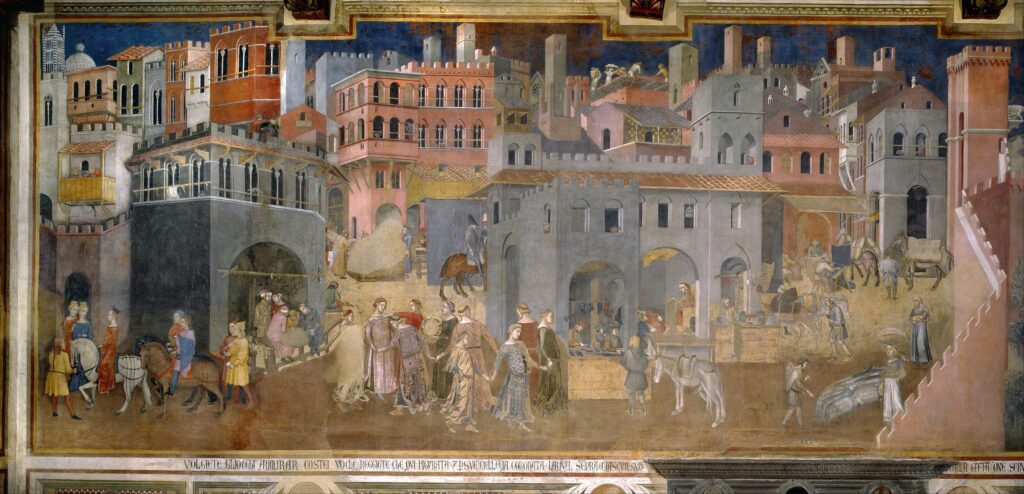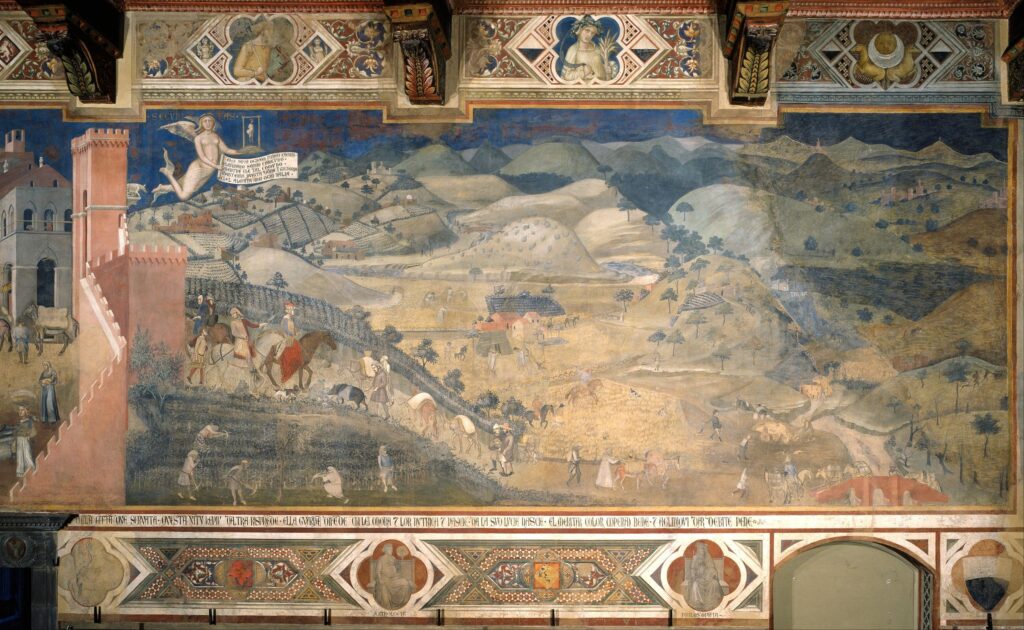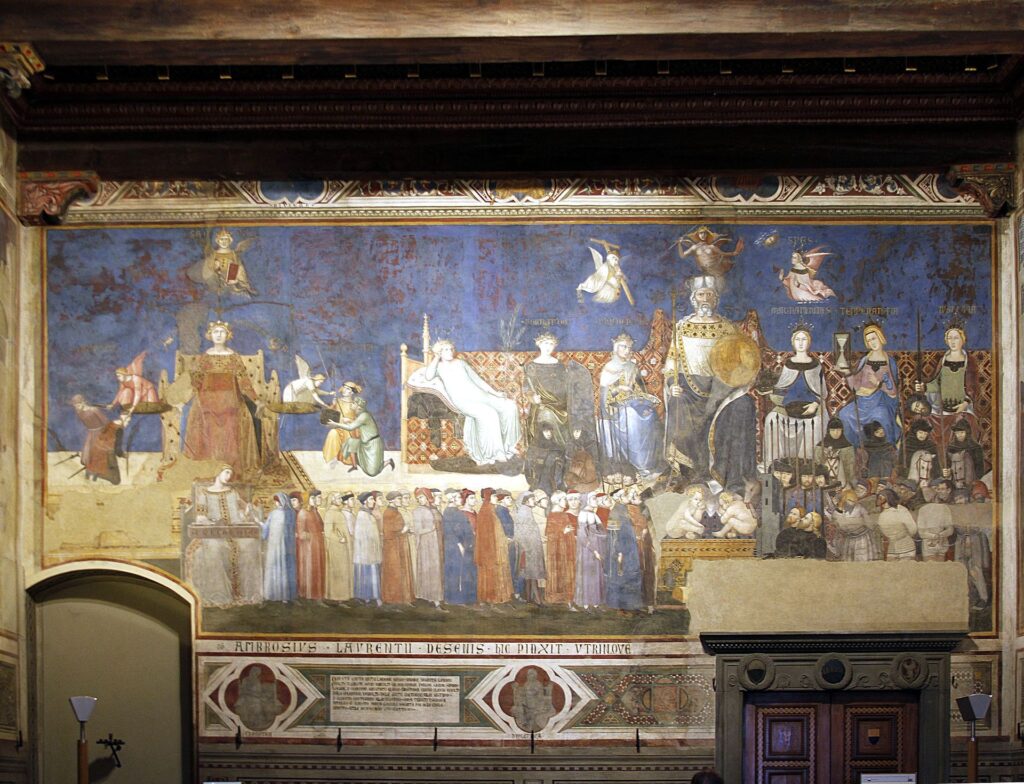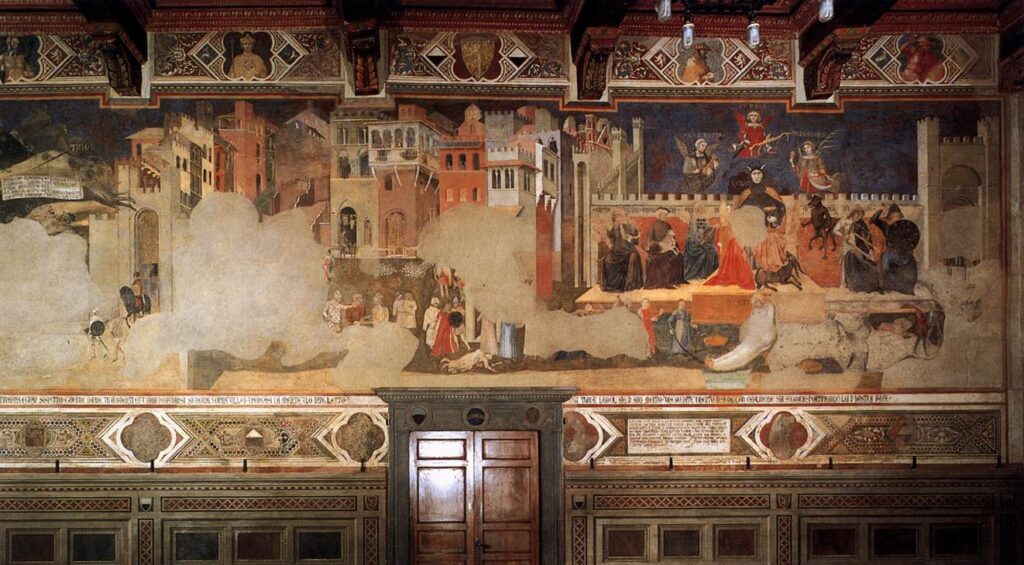




“The Allegory of Good and Bad Government” fresco series by Lorenzetti, situated in Siena’s Palazzo Pubblico, provides a profound portrayal of governance and its profound impact on society. Through the lens of niche construction, which explores the relationship between humans and their environment, these frescoes go hand and hand with human niche construction. The series vividly depicts various elements of human niche construction, such as urban spaces, architectural structures, and social interactions. These elements signify humanity’s ability to adapt and modify its environment to meet its needs and desires, emphasizing the dynamic nature of niche construction. The good government side of the fresco emphasizes harmony, justice, and prosperity. They present well-ordered streets filled with activity, productive agricultural scenes, and a thriving economy. These images vividly demonstrate how effective governance can foster social stability, economic growth, and overall well-being. If you look closely at the first two pictures you can see merchants in the streets, classrooms in session, and people repairing and improving buildings, and outside of the city walls you see the flow of goods going in and out of the city as the farmers in the fields and moving their goods into the city to sell to the people of Sienna. They show the leaders of the government of Siena the positive outcomes that arise when humans construct their niche in a manner that promotes cooperation, fairness, and the collective advancement of society. This side of the painting is depicting Aristotle’s good life description by showing what can happen when you have a fully functioning polis and how the diversification of skills leads to improvements in society overall and how powerful the social aspect of humans can be. On the other hand, the frescoes depicting bad government reveal the dire consequences of ineffective governance. They depict scenes of chaos, violence, and societal decay. The crumbling structures and chaos in the streets reflect a poorly constructed human niche, characterized by corruption, conflict, and inequality. These images serve as a cautionary tale, illustrating the negative effects that arise when governance fails to prioritize the well-being of its citizens and a sustainable environment for the community. Aristotle’s good life can also be used to look at what happens if you do not do these things and you will end up with a bad government depiction as Aristotle says without correct law and order in a polis the people will turn and start to act like savage beast destroying what they have made for their selfish desires. The frescoes highlight the interplay between governance and human niche construction. They emphasize how government policies, decisions, and actions shape their environment, thereby influencing the behavior, well-being, and livelihoods of the people living in Siena. These depictions convey that the quality of governance directly impacts the construction and sustainability of the human niche. Whether through good or bad times, governance plays a pivotal role in determining the trajectory of a society and its niche.
